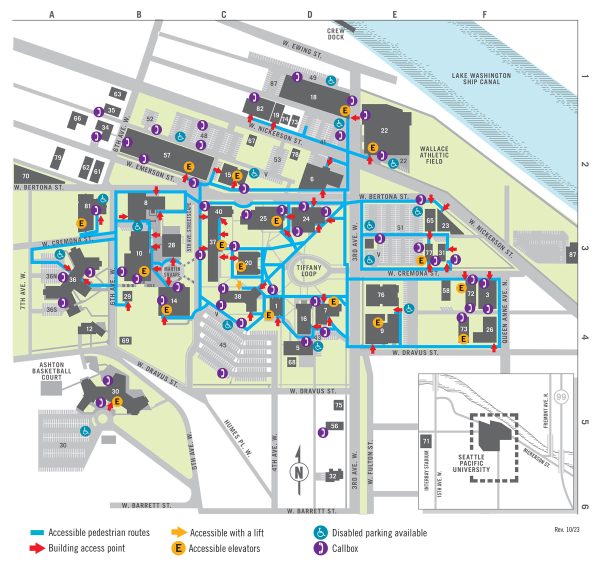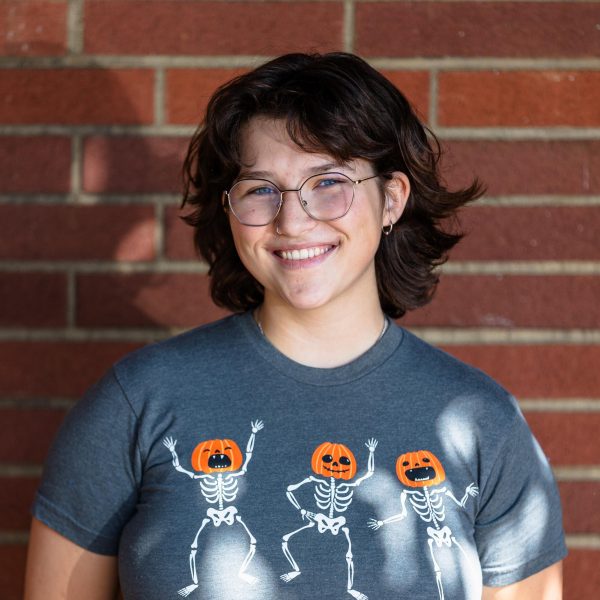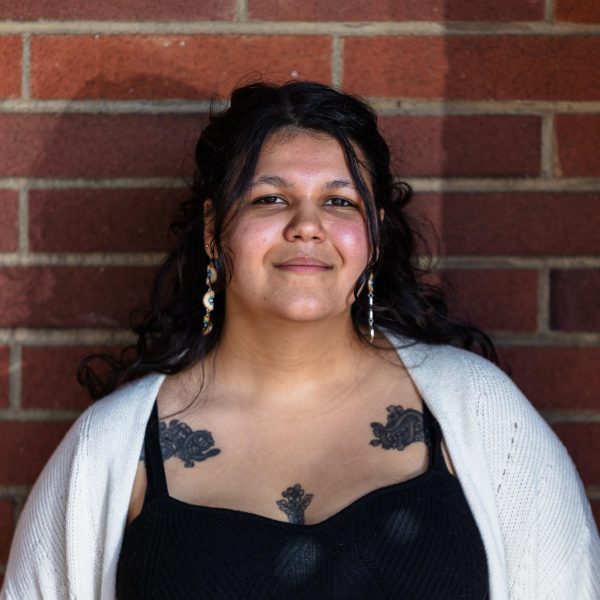
Built on a series of hills, Seattle Pacific University poses unique challenges for students. They often must hike to get to class, lunch and home. While efforts have been made on campus to increase resources for those with disabilities, the lay of the land makes it difficult for SPU to crest the hill of accessibility.
Logan Worth, a former SPU theater and honors major, transferred to Cornish College of the Arts after his freshman year due to health concerns. Progressing from a cane to forearm crutches, to a wheelchair made accessing Gwinn Commons Dining Hall and various buildings nearly impossible.
“It was all those little things culminating; these buildings don’t have elevators. These hills are too big,” Worth said. “That’s not something that I can get upset with one person for, but overall, it was a completely inaccessible environment for a student.”
Several solutions with the Office of Safety and Security and Disability Support Services were tried and failed. After scheduling conflicts with OSS driving Worth around campus, and a recommendation to purchase a motorized wheelchair, Worth felt forced to leave his hefty scholarship behind and is now pursuing a bachelor’s of fine arts at Cornish.
“I came into the year as a seemingly able-bodied student and then was unable to return due to something that could have happened to anyone,” Worth said. “You can’t ask that much from an institution, but having someone tell me to buy this expensive piece of medical equipment definitely put a damper on my feeling like the school valued students individually.”
Lou Bridges, senior museum studies major, has used a cane since their sophomore year. One of their biggest challenges was initially finding a parking spot to access Demaray Hall, Weter Hall, Arnett Hall, Gwinn Commons Dining Hall, and Ames Library.
For stair-free access to every single one of these buildings, there are three disabled parking spots.
“There’s two next to Gwinn and one in front of Arnett,” Bridges said. “So only three disabled people can go to any of those buildings at a time.”
When they first started using a cane, Bridges had a class on the second floor of Demaray. If none of those three parking spots were available, they were not able to attend class.
“There was nowhere else for me to park that I can walk to class from and still have the energy to like actually be in class,” Bridges said.
Bridges had a similar experience on the other side of campus. The accessible entrance of the Cremona Classrooms building was out of order starting in the fall quarter of 2023.
“The door itself stopped working, so no one could get in and they just put a sign that said ‘out of order, please use other entrance,’” Bridges said. “That entrance is up the stairs from the normal parking lot.”
It was repaired near the middle of 2024’s winter quarter, out of commission through two quarters. If Bridges was able to park near the 7-Eleven or Two Kick Coffee, they could walk farther to the accessible door.
“I put in a work order request and I specifically said that this door being broken means that Cremona is not accessible, because street parking is so limited,” Bridges said. “I’ve been working with my physical therapist on getting my walking up, but what if I’m having a flare?”
Bridges has a multitude of stories about the difficulty of entering buildings, getting to class and just being on campus at SPU – so do all students with disabilities navigating places like Gwinn Commons Dining Hall, Marston-Watson Hall, Crawford Hall and many others.
According to Debbie Wilkins, disability support manager at SPU, the main accommodation for physical disabilities is the relocation of classes to different classrooms, given that some buildings on SPU’s campus are completely inaccessible.
“Physical disabilities are a tiny, tiny percent of our disabilities, but our main accommodation for [them] is we relocate classrooms,” she said. “Like, if there’s two classes together, we try to not do one in Otto Miller, which requires crossing Nickerson.”
Sophia Pretti, freshman communication major, has cerebral palsy and uses her wheelchair to get everywhere. DSS has been “really helpful.”
“I’m happy I’m here,” Pretti said. Having chosen the school because of its nearness to home, Pretti “loves the atmosphere of this whole place — the buildings, the campus.”
Accommodations provided by Disability Support Services include ergonomic chairs, scribes for exams, exam readers, as well as priority registration, according to Katlin Barr, assistant director of learning support services.
“Come to us, see what we can do,” Barr said.
Delays and inefficiency in DSS’ responses are largely a result of understaffing, budget cuts and hard hills to work with.
“It’s a good place to check. They do their best to make things work,” Bridges said. “They don’t really have a lot of institutional power to change things, so it’s a lot of DSS working within the system to try to make things okay for disabled people on campus.”
Making changes to SPU’s geography and fixing broken wheelchair lifts would take financial and structural focus.
“That’s really expensive,” Bridges said, referring specifically to the broken chair lift that litters stairs leading to Martin Square. “You know, anything that would make this campus more accessible is expensive.”
DSS and OSS provide an Accessibility Map that leads students through a stair-free, not always hill-free path through campus.
“It is not easy,” Bridges said. “A lot of the accessible pathways to get places are either much longer walk around or, like, up hills.”
What is mild exertion to most students is impossible for those with physical disabilities.
“It’s been challenging at times, up hills,” Pretti said. “I wish there were elevators on this campus.”
To see paths from the Accessibility Map, watch The Falcon’s video below.
“I was aware of this difficulty all of a sudden when I first started using a cane,” Bridges said. “You don’t really notice it until you have to, and people don’t think about it at all.”



















































































